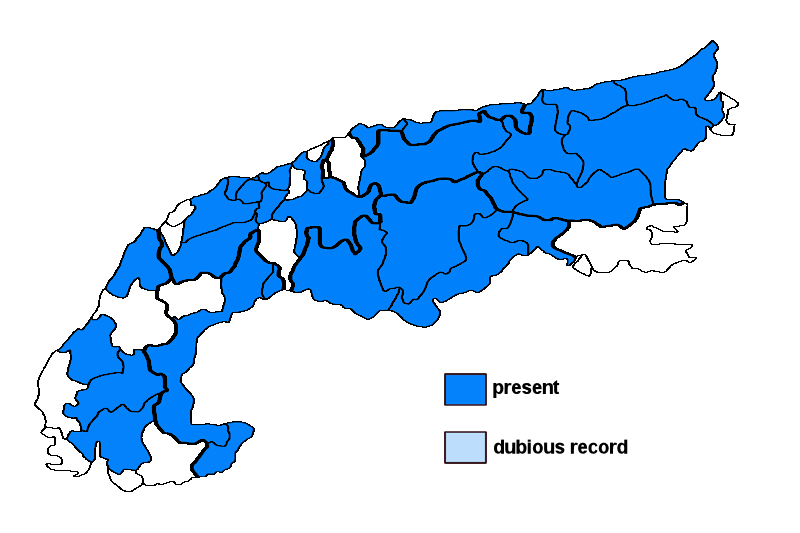Xanthomendoza fulva (Hoffm.) Søchting, Kärnefelt & S.Y. Kondr.
Syn.: Gallowayella fulva (Hoffm.) S.Y. Kondr., N.M. Fedorenko, S. Stenroos, Kärnefelt, Elix, Hur & A. Thell, Lobaria fulva Hoffm., Oxneria fulva (Hoffm.) S.Y. Kondr. & Kärnefelt, Xanthoria candelaria (L.) Th. Fr. f. fulva (Hoffm.) Zahlbr., Xanthoria fulva (Hoffm.) Poelt & Petut., Xanthoria ligustica M. Steiner ex Poelt nom. sol.
Lichenised.
Substrate: bark
Altitudinal range: from the submediterranean/colline belt (potential vegetation: mixed deciduous forests dominated by Quercus and Carpinus) to the subalpine belt (potential vegetation: open, taiga-like forests dominated by Larix decidua and/or Pinus cembra and Rhododendron)
Note: most frequent on isolated deciduous trees along roads in continental valleys of the Alps; often confused with X. huculica in the past, and with a similar ecology, but perhaps more xerophytic.
Austria: Tirol; Salzburg; Kärnten; Steiermark; Oberösterreich; Niederösterreich (incl. Wien); Germany: Oberbayern; Schwaben; Switzerland: Bern; Graubünden; Luzern; St. Gallen; Schwyz; Uri; Unterwalden; Valais; France: Alpes-de-Haute-Provence; Haute-Alpes; Isère; Haute-Savoie; Italy: Friuli; Veneto; Trentino Alto Adige; Lombardia; Piemonte; Liguria;





